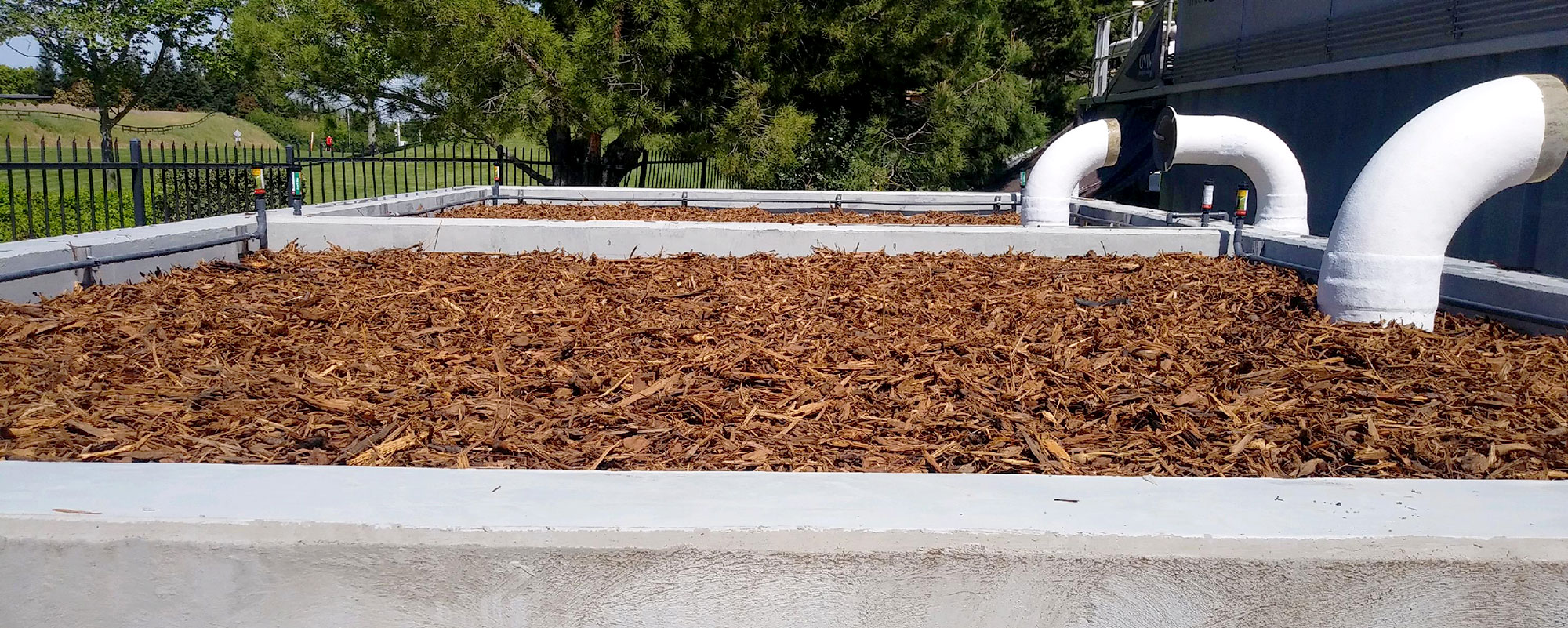
Wood chips like GES Biotek’s Fiber-Max™ contain natural properties that make them effective in odor control.
Odor emissions from industrial and municipal facilities are a significant environmental concern, affecting air quality and human well-being. Biofiltration has emerged as a sustainable and cost-effective method for odor control, utilizing natural biological processes to degrade odorous compounds.
Among various biofilter media, wood chips are extensively used due to their structural stability, ability to support microbial growth, and cost-effectiveness. This paper investigates the reasons for the widespread adoption of wood chips in biofiltration systems.
Properties of Wood Chips in Biofiltration
Wood chips serve as an excellent medium in biofilters due to their unique physical and chemical characteristics:
- Porosity and Surface Area: Wood chips provide a high surface area for microbial attachment, promoting the biofilm formation necessary for biodegradation.
- Moisture Retention: Proper moisture levels are critical for microbial activity, and wood chips help retain adequate moisture within the biofilter.
- Airflow and Permeability: The porous structure of wood chips facilitates effective airflow, reducing pressure drop while ensuring efficient gas exchange.
- Biodegradability: Over time, wood chips gradually decompose, contributing organic matter that supports microbial communities.
- pH Buffering Capacity: Wood chips help maintain a stable pH within the biofilter, which is essential for microbial efficiency.
- Natural Antimicrobial Properties: Certain types of wood chips, such as cedar, contain antimicrobial compounds that can influence microbial community composition.
Mechanisms of Odor Removal
Biofilters operate through several mechanisms to eliminate odorous compounds:
- Adsorption: Some odorous compounds, such as hydrogen sulfide (H2S) and volatile organic compounds (VOCs), adhere to the wood chip surfaces before being metabolized.
- Microbial Degradation: Microorganisms colonizing the wood chips break down odorous compounds into non-odorous byproducts such as carbon dioxide and water.
- Mass Transfer Efficiency: The movement of odorous compounds from the air phase into the biofilm for degradation is facilitated by the high surface area of wood chips.
- Retention of Organic Compounds: Wood chips can capture and temporarily store organic molecules, allowing for more gradual microbial breakdown and odor mitigation.
Advantages and Limitations of Wood Chips in Biofilters
Advantages
- Readily available and cost-effective
- Provides a stable structure for microbial communities
- Enhances moisture retention and airflow
- Can be sourced from clean recycled wood materials, promoting sustainability
Limitations
- Decomposition over time necessitates periodic replenishment every 3-5 years
- Potential compaction can reduce airflow and efficiency
- Limited removal efficiency for highly hydrophobic compounds
- Requires proper moisture management to prevent drying or excessive saturation
Potential Improvements and Alternatives
To enhance the performance of wood chip biofilters, research suggests blending wood chips with other materials such as compost, activated carbon, or synthetic media to extend longevity and improve removal efficiency.
Engineered biofilter media, such as GES Biotek’s Enhanced Cell-Max™ media with a 20 year warranty, offers a high-performance alternative to wood chip media.
Conclusion
Wood chips remain a popular choice for biofiltration due to their affordability, effectiveness, and ease of implementation. While they provide excellent conditions for microbial activity and odor degradation, challenges such as media degradation and compaction necessitate periodic maintenance and replenishment every 3–5 years.
Advancements in biofilter media offer improved longevity and efficiency such as GES Biotek’s Enhanced Cell-Max™ media, further optimizing odor control technologies.